I took my bike to ‘Mars’ for two weeks - here’s what it was like
Planetary geologist Helen Eifert brought her bike and trainer to a Mars simulator for two weeks as her only form of exercise. Could humans one day cruise around the Red Planet?
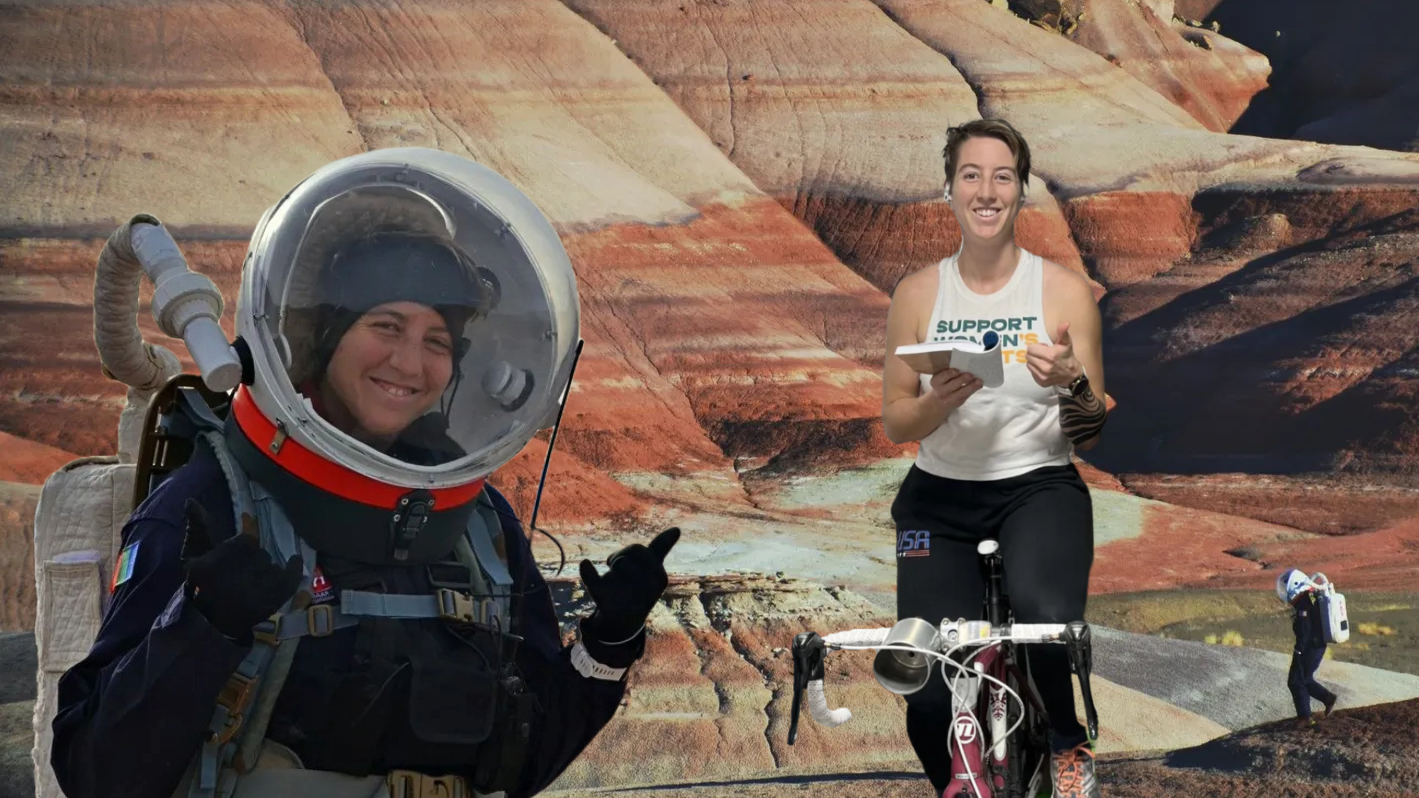

Red dirt, vast plains, towering volcanoes and not a car in sight – sounds like the ultimate place for gravel riding, no? Sadly, this gravel haven is a little hard to get to as it’s on another planet altogether. But one intrepid planetary geologist is pedaling her way toward the future of exploration.
Earth’s Solar System neighbor Mars is approximately 225 million kilometers away, and has so far only been explored by unmanned spacecraft who have combed its sanguine surface for signs of water and microscopic life.
And although movies like My Favorite Martian and Arrival may have us thinking Mars and other planets are readily habitable, that is not currently the case. Yet planetary scientists like Arizona-based doctoral candidate Helen Eifert are out to make humans visiting Mars –and maybe even riding bikes there– a reality in the not-so-distant future.
Two Weeks on Mars
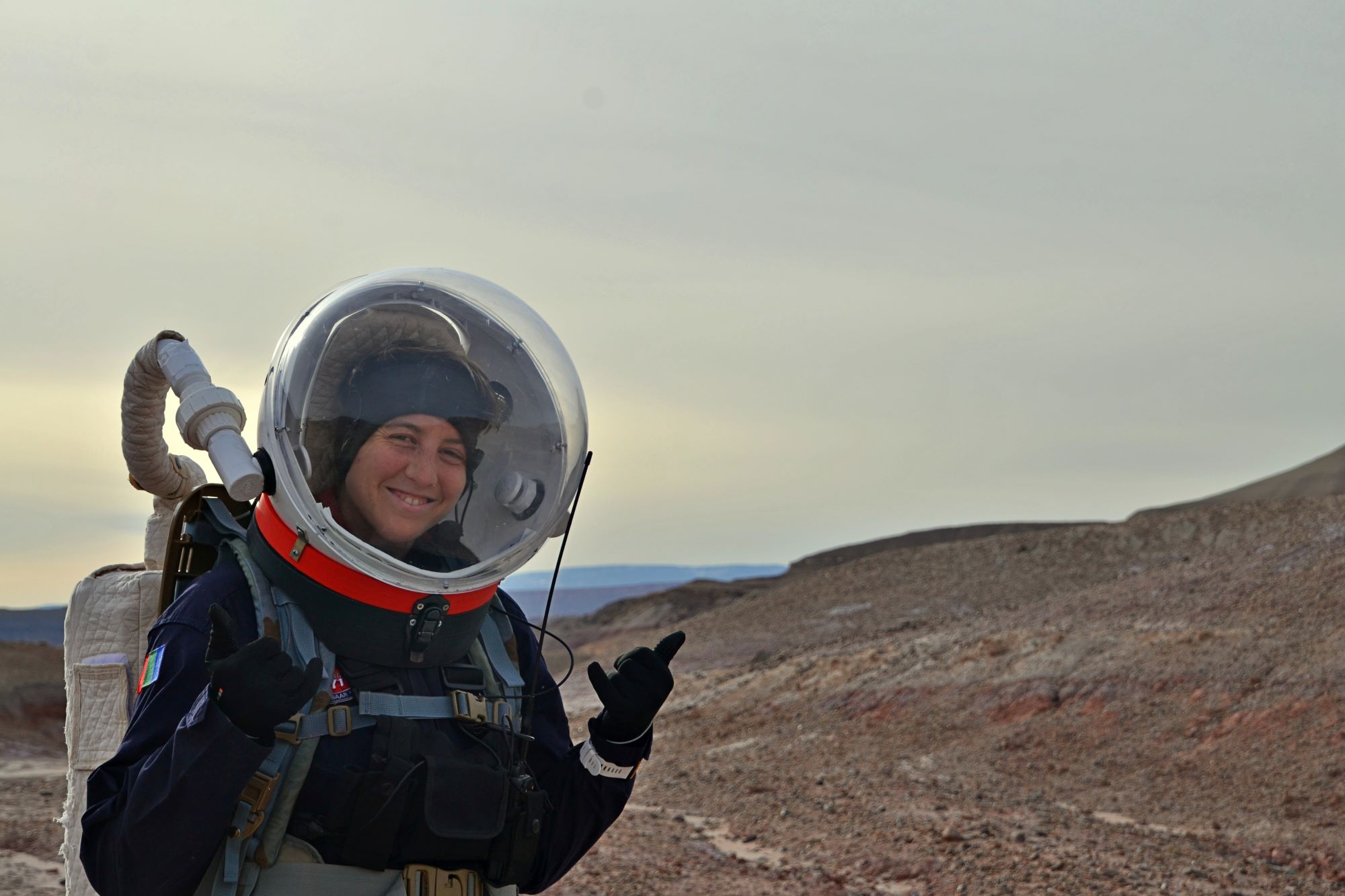
Eifert is a planetary geologist pursuing her PhD in planetary science at Northern Arizona University. She studies the physical environments of other planets, from their rocky surfaces to their atmospheres, and one day hopes to be among the select few chosen to visit these foreign planets.
“I enjoy studying geology and planetary science because of the physical and outdoor components of that field of study,” Eifert says. “I get to be outside in remote, amazing places that sometimes are only accessible by mountain bike or hiking and it’s possible that my work could one day take me into outer space, which is super cool.”
In December 2022, Eifert was accepted into a two-week-long Mars simulation program at the Mars Desert Research Station in Southern Utah. Here, she lived with five other scientists in an otherworldly environment to conduct research tailored to her expertise and interests.
Space is bad for bone density
Maintaining bone density and physical fitness is crucial for astronauts in space, where the gravitational pull from Earth is significantly decreased.
The reduced gravitational force acting upon the skeleton, can lead to a loss of up to 2% of bone density per month in the hip and spine during space missions.
As a countermeasure, NASA mandates that all astronauts engage in 2-2.5 hours of physical activity daily, comprising a mix of cardio and resistance training.
Eifert and the rest of Crew 271 spent the 14 days living in, as she described, “a 600-square-foot tin can,” replicating exactly what a real mission to Mars might be like.
The latest race content, interviews, features, reviews and expert buying guides, direct to your inbox!
Maintaining bone density and physical fitness is crucial for astronauts launched millions of miles into space, where the gravitational pull from Earth is significantly decreased. According to NASA, the reduced gravitational force acting upon the skeleton, can lead to a loss of up to two percent of bone density per month in the hip and spine during space missions. Astronauts are also at risk of bone fracture and early-onset osteoporosis due to spaceflight.
As a countermeasure, NASA mandates that all astronauts engage in two to two-and-a-half hours of physical activity daily, comprising a mix of cardio and resistance training.
Although the Utah-based Mars simulator did not replicate the fact that Mars has about 38% of the gravity of Earth, crewmembers of the simulator were still encouraged to bring appropriate exercise equipment and complete the one-to-two hours a day of exercise real astronauts are required to do each day to prevent bone density loss.
Eifert opted to bring her commuter road bike and a “dumb” trainer.
“I wanted to make the Mars simulation as real as possible - the simulation did not require you to follow the workout guidelines set forth by other astronauts, but I was there to be all-in,” Eifert says. “I wanted to stay physically active not just for my fitness, but to stay mentally sharp in an isolated environment, as well.”
"My butt hurt - a lot."
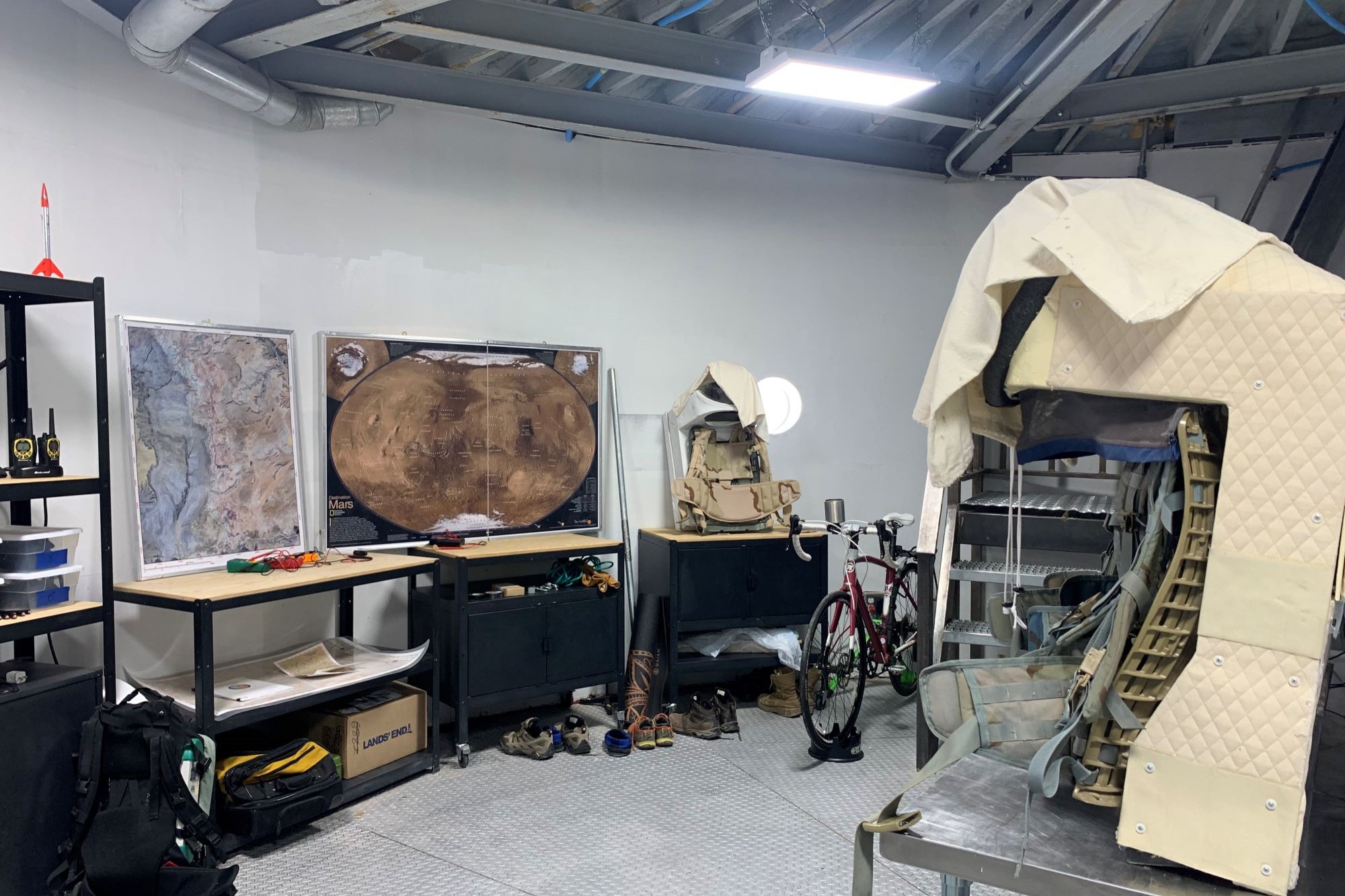
Helen Eifert's stationary setup at the Mars Desert Research Station
While cycling was a relatively new territory for Eifert, she is not unfamiliar with pushing herself athletically. Eifert is a national champion and semi-professional ultimate frisbee player for the Arizona Sidewinders and trains seven days a week.
“I knew I couldn’t bring my entire rack of weights with me, and I didn’t have room to practice throwing a frisbee, but I knew I could put my bike on a trainer and take up relatively little space in our bunk area,” Eifert says. “In the real International Space Station, a bike is one of the pieces of workout equipment astronauts have access to, so I thought it was perfect to bring my bike and a trainer to the Mars simulation.”
When she wasn’t donning a full space suit complete with oxygen tanks to conduct her research, Eifert logged between 60 and 90 minutes of cycling daily for a total of nearly 19 hours of riding over her two-week stay.
Eifert says that she would alternate between easy spins and harder intervals, and decided her trainer workout each day based on what felt fun and good for her mind and body.
In those two weeks, Eifert’s average heart rate while riding was 127 beats per minute (bpm) and her average ride duration was 77 minutes per day, with her longest ride being two hours and 11 minutes. Her max heart rate during a ride was 183bpm - the same day she clocked her max cadence of 111rpm.
For Eifert this is mostly a zone 1 and 2 effort. The focus here was simply to log the recommended hours of activity to hypothetically prevent bone density loss, rather than improving her cycling fitness.
“I was in the off season for ultimate frisbee during my time at the simulator, so I was more focused on maintaining some sort of aerobic capacity than I was on setting any new records,” Eifert says. “I would often listen to podcasts or read academic papers and studies while doing an easy spin on the bike.”
During this time, Eifert was on a typical “astronaut food” diet, consisting of mostly freeze dried contents such as freeze dried ice cream, freeze dried fruit, and powdered beverages. Eifert consumed approximately 2,800 calories of said astronaut food each day, per NASA’s astronaut food intake guidlines.
She used flat pedals and sneakers for riding, and brought two pairs of bike shorts for the 14 days in the simulator, giving them a quick rinse in between use with the limited water ration available to the simulator crew.
Her main takeaway from riding so much as a new cyclist echoed that of all beginners: “My butt hurt - a lot,” she says.
What the future holds
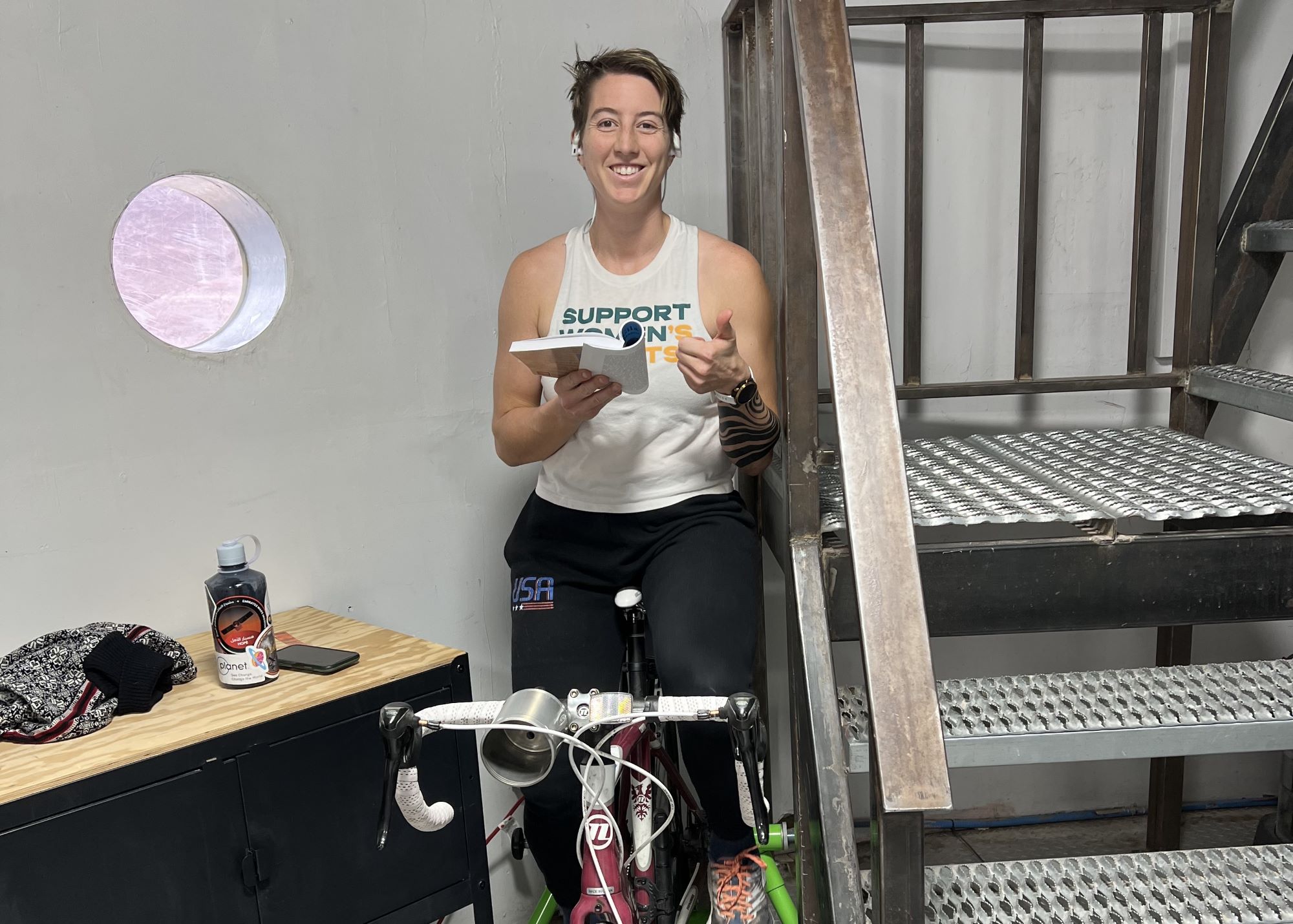
Helen Eifert at the Mars Desert Research Station, which she called "a 600-square-foot tin can."
The chance of one day actually cruising along Mars’ varied surfaces is still a ways out, Eifert shares.
Even setting aside the challenges of reaching the destination, two main obstacles stand in the way of cycling on the Red Planet: the reduced gravity and the necessity of space suits and oxygen.
“We’d have to come up with a sportier design for today’s space suits, which are quite bulky and hard to move in – I can’t see how someone would perch on a bike saddle in the puffy suits we wear today,” Eifert says with a laugh.
About Mars
- Mars is 225 million kilometers (140 million miles) away
- Mars has about 38% of the gravity of Earth
- The average temperature on Mars is around -63°C (-81°F)
- Oxygen levels on Mars are insufficient for human respiration
“Additionally, gravity on Mars is only about one-third as strong as it is on Earth. We wouldn’t float away, but cycling would be very slow-moving. You wouldn’t pick up much speed on downhills and it would be difficult to spin your way up to a high speed.”
Perhaps one benefit of less gravity is that we would tip over slower, Eifert says. Less gravity means it would be impossible to crash into the ground with the level of force we experience on Earth, so say goodbye to painful falls from your bike once you’re aboard two wheels on Mars.
Additionally, Mars is quite cold. Eifert describes its environment as being akin to Antarctica, with temperatures just above freezing at the mid-latitudes and as low as negative 200 degrees Fahrenheit at the poles. Winter cycling apparel has come quite far in recent years, but perhaps not far enough - yet - to accommodate negative 200 degrees.

Since her time in the Mars simulation, Eifert has returned to her true athletic love of ultimate frisbee, but she still pulls her bike out from time-to-time.
“I did a 60-mile ride on the one-year anniversary of my completion of the simulation. I hadn’t ridden my bike except to commute since December 2022 and it was nice to revisit the piece of equipment that gave me so much solace while in the simulator,” Eifert says. “I’d like to keep up the tradition of doing a long ride each year on the anniversary of my time ‘on Mars,’ but I don’t think you’ll find me turning into an avid cyclist any time soon.”
Eifert has all the makings of becoming an avid cyclist should she want to, though - she averaged 14.6 mph and 130bpm to log 58.52 miles to commemorate her time on “Mars” this past December.
Eifert’s personal prediction is that we will see humans land on Mars in the coming decades. If she plays her cards right, she just might have a chance to let us know how riding her bike on our planetary neighbor’s surface really feels.
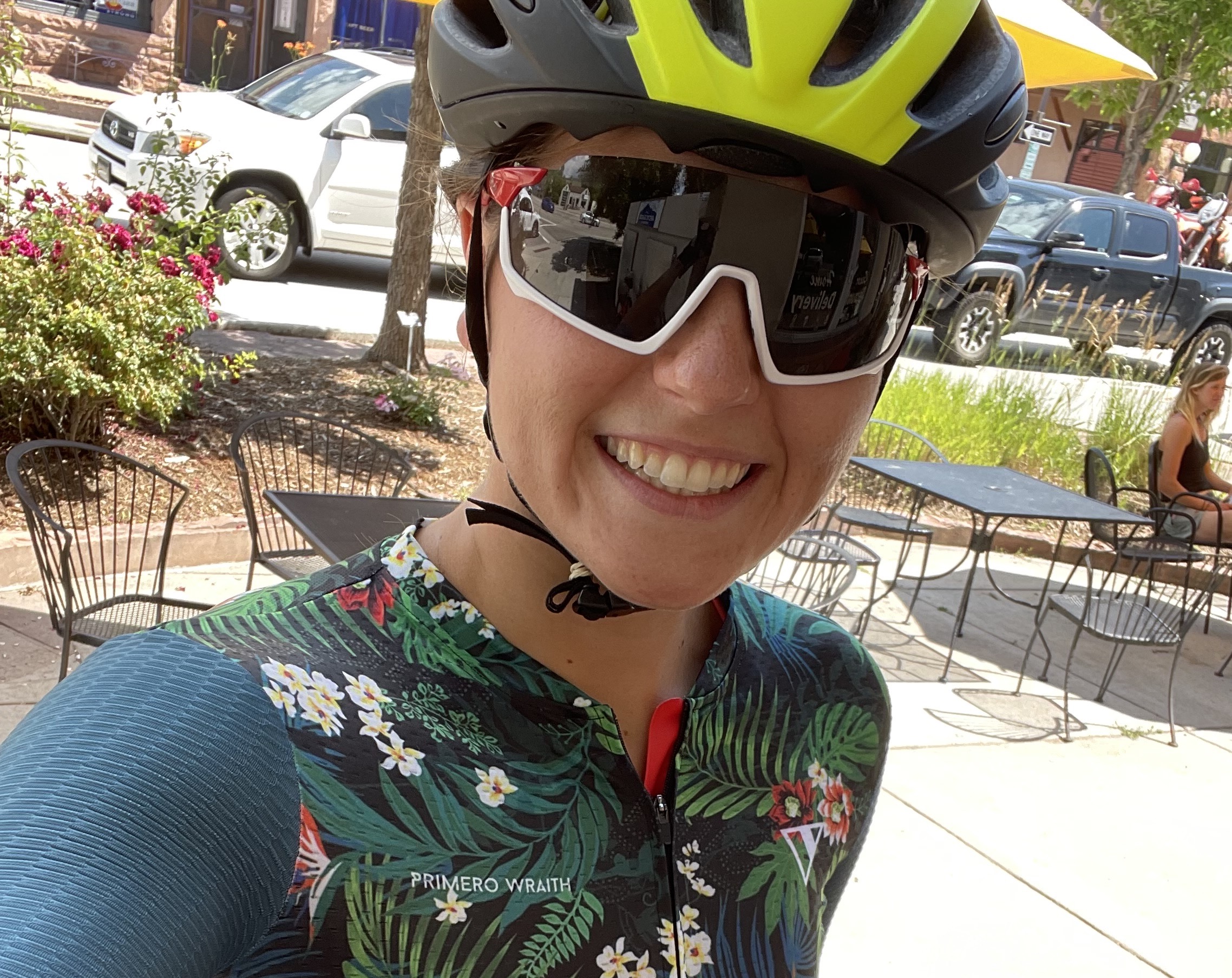
Kristin Jenny is an elite triathlete based near Boulder, Colorado. Although most of her time is spent in aerobars somewhere in the mountains, she finds time to enjoy eating decadent desserts, hiking with her husband and dog, and a good true crime podcast.